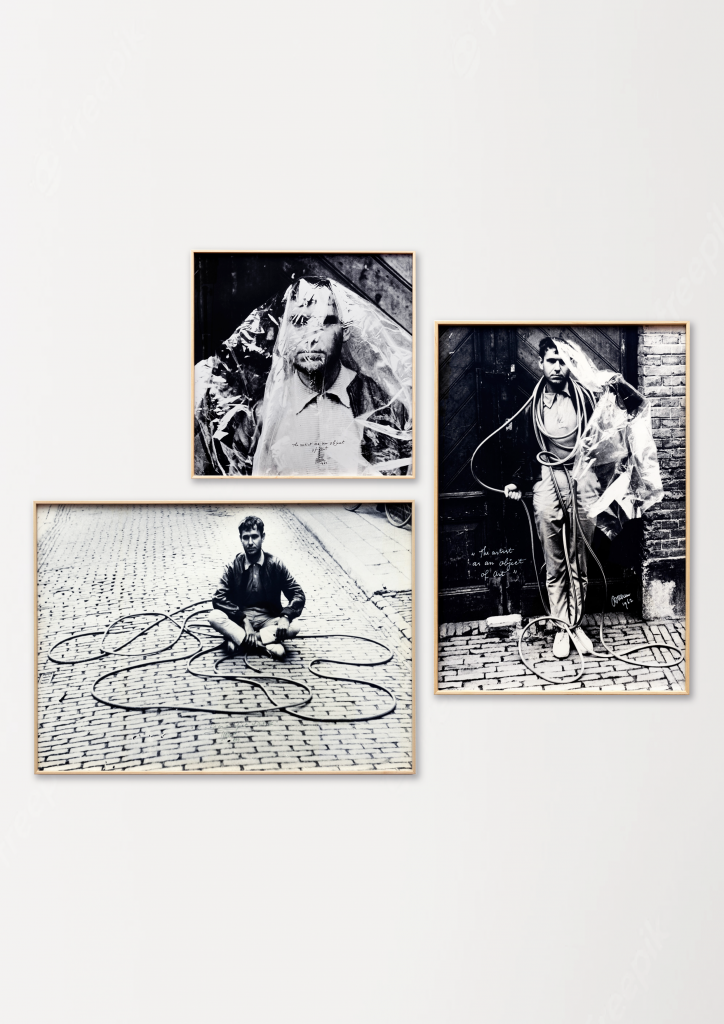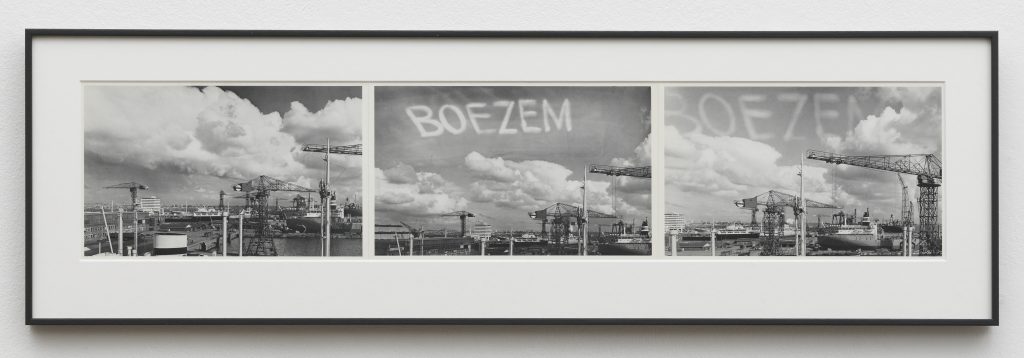#MeetTheArtist: the curious imagination of Marinus Boezem
At Art Rotterdam, you will spot the work of hundreds of artists from all over the world. In this series we highlight a number of artists who will show remarkable work during the fair. During Art Rotterdam, Upstream Gallery will present work by Noor Nuyten, Kévin Bray (who was nominated for the NN Art Award), Frank Ammerlaan and Marinus Boezem. In their practice, these artists all explore a connection between material, physical worlds and immaterial or digital worlds. Experimentation in terms of materials and techniques plays a significant role in that.

Marinus Boezem (1934) is considered to be one of the most influential Dutch conceptual artists of the past century, alongside Ger van Elk and Jan Dibbets. In the 1960s, Boezem discovered the artistic potential of elusive elements such as air, weather, movement and light, resulting in a series of exciting, intelligent and immaterial works that often contain a powerful, poetic and humorous charge.
His work “3 Seconds of Dutch Light” from 1976 offers a striking illustration. Most people will think of 17th century paintings when they hear the term 'Dutch light'. Boezem offered a more conceptual twist to the genre, when he exposed a sheet of photosensitive photo paper to Dutch light for three seconds, after which he mounted it on an aluminum plate. Three full seconds of light, however, will result in a completely monochromatic black sheet of paper. The 17th-century painters who traveled en masse to our coast may have managed to capture a representation or interpretation of light, but Boezem's work actually captures Dutch light — as a material or ingredient, even if it is no longer visible to the viewer.
The idea is central to Boezem's practice, alongside a curious imagination. This means that he works in a multitude of materials and disciplines. In 2021, the Kröller-Müller Museum presented his 'shows', based on a series of fifteen drawings that he made between 1964 and 1969. These are conceptual blueprints for installations that could possibly be realised. Boezem sent them to art institutions or presented them in person. Some concepts were implemented at the time, other sketches first found a physical form in the exhibition at the Kröller-Müller Museum.

Boezem wants to make art that is close to life, in part because museums do not always invest in their relationship with (and relevance within) society. In 1969 he was co-initiator of the rebellious and leading exhibition 'On loose screws' in the Stedelijk Museum. One of the works he exhibited was “Bedding”, for which he hung pillows and sheets from all the windows of the museum. With a wink he symbolised both a breath of fresh air through the museum and a recognisable household tradition. At the same time, Boezem manages to make something immaterial visible: a breeze. Moreover, the artist effectively blurs the boundaries between the almost sacred museum space and the public space, presenting art as a bridge between the museum and society.
Boezem would later make several works of art for the public space. His “Green Cathedral” in Almere was voted the most popular outdoor artwork in the Netherlands — wedding ceremonies are even performed there. The work consists of 174 Italian poplars that form the floor plan of the Notre-Dame cathedral of Reims, true to size. A little further on, the exact same shape has been removed from a wooded area, reshaping the floor plan of the structure, but now in negative space. The cathedral is a recurring element in Boezem's oeuvre and the artist also joked that a new city, rising from the polder, deserved a cathedral. Other recurring themes in his practice include the universe and cartography.
Boezem's conceptual work is also related to the arte povera of the 1960s and 1970s, an originally Italian art movement in which artists resisted the commercialisation of the art world, among other things. On the one hand, materials were chosen that represented no financial value — such as earth or twigs — and on the other hand, the often perishable or immaterial art of these makers was sometimes difficult to trade as a commercial product. The movement was extremely influential, with significant parallels in other international art forms of the time; from land art and minimal art to conceptual art.
Boezem's work has been exhibited at Museum Boijmans Van Beuningen, the MoMA, the Brooklyn Museum, the Van Abbemuseum, Kunsthalle Bern, the Museum of Contemporary Art in Chicago, the Hamburger Bahnhof and the Kyoto Municipal Museum of Art, among others. His work has been collected by institutions like the MoMA, Museum Voorlinden, Kunstmuseum Den Haag, the Stedelijk Museum, Museum Boijmans van Beuningen and the Kröller-Muller Museum. During Art Rotterdam, the work of Marinus Boezem will be on display in the booth of Upstream Gallery.
Flor Linckens


